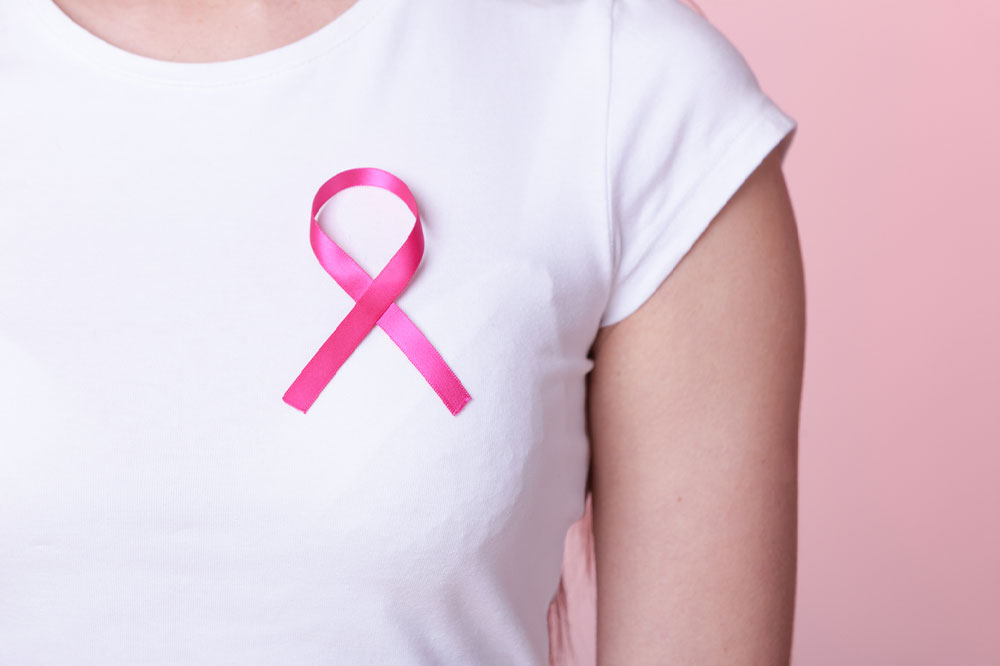Causes, Symptoms, Stages, and Management of Triple-negative Breast Cancer
Statistical data suggests that every year, nearly 2,64,000 and 2,400 breast cancer cases are detected nationwide among women and men, respectively. The condition requires early diagnosis and timely treatment for survival and recovery. With rapid advancements in healthcare, oncologists have developed useful treatments for breast cancer. Triple-negative breast cancer is a type of breast cancer affecting 10 to 15% of patients with the condition. Read on to learn about its causes, stages, signs, and treatments.

What is triple-negative breast cancer?
Triple-negative breast cancer, or TNBC, is a type of breast cancer in which the cancer cells do not have estrogen receptors, progesterone receptors, or high concentrations of the HER2 protein.
In regular breast cancer cases, estrogen and progesterone hormones latch on to specific proteins or “receptors” in breast cancer cells, contributing to their growth. Moreover, the presence of the protein HER2 in breast cancer cells causes them to multiply quickly. Patients having tested negative for all three factors (estrogen receptors, progesterone receptors, and HER2) are diagnosed with triple-negative breast cancer.
Causes of triple-negative breast cancer
The following factors can trigger the onset of this condition:
- Genetics
Everyone inherits one set of BRCA1 genes from each of their parents. A mutation to this gene is considered the leading cause of certain types of cancer, including breast cancers like triple-negative breast cancer, prostate cancer, and ovarian cancer. About 70% of women with an inherited BRCA1 mutation who develop breast cancer are diagnosed with the triple-negative type. - Sedentary lifestyle
Studies have demonstrated that a sedentary lifestyle increases one’s risk of breast cancer. Individuals with a sedentary lifestyle are highly susceptible to triple-negative and other types of breast cancer. - Late pregnancy
Women who give birth after age 30 are at a higher risk of developing breast cancer than those who become mothers early on. - Hormone replacement therapy
Hormone replacement therapy (HRT) somewhat increases one’s risk of breast cancer and other types of cancer, such as ovarian and womb cancer. - Vitamin D deficiency
Vitamin D is associated with the termination of cancer growth; conversely, its deficiency is linked to an increased risk of breast cancer. - Age
Women in the premenopausal stage and those below age 50 are more vulnerable to developing breast cancer than others.
Symptoms of triple-negative breast cancer
The symptoms may be quite similar to those of other types of breast cancer. Some of the indicators are as follows:
- Changes in breast shape
- Breast swelling
- Breast lump
- Nipple or breast pain
- Inverted nipples
- Nippular discharge
- Crease formation in the breast
Stages and prognosis of triple-negative breast cancer
The condition progresses over five stages as follows:
- Stage 0
This stage is characterized by the development of abnormal cells in the breast lobes or milk ducts. - Stage 1
In this stage, the cancer cells are restricted to a single lymph node near the affected breast. - Stage 2
In stage 2, cancer spreads to the lymph nodes in the underarm region. - Stage 3
In stage 3, breast cancer starts spreading to areas beyond the breast but does not reach other organs. - Stage 4
The malignant cancer cells spread to other body organs in this stage.
Treatment options and management
Healthcare providers may recommend the following procedures on diagnosing breast cancer:
- Lumpectomy
In this procedure, a surgeon removes malignant breast lumps and tests nearby lymph nodes to determine if the cancer has spread to these areas. - Radiation
Radiation typically follows a lumpectomy and involves supplying high-intensity radiation to the affected breast to kill cancer cells. The procedure is carried out over about six weeks for five days a week, with the sessions taking place for roughly 20 minutes each day. - Mastectomy
Mastectomy is the surgical removal of one’s breasts and nearby lymph nodes to determine the spread of cancer. Patients may opt for a breast reconstruction procedure following a mastectomy. - Chemotherapy
Chemotherapy is usually administered in the advanced stages of breast cancer when cancerous cells have spread to other organs. It is a tried-and-tested method of eliminating cancer cells and lowering the risk of a relapse.
Side effects of triple-negative breast cancer treatments
The treatments used for managing the condition can have the following side effects:
- Nausea
A common symptom of triple-negative breast cancer, nausea is particularly prevalent among patients undergoing chemotherapy. Doctors may prescribe other interventions to regulate this symptom. - Fatigue
Many individuals feel exhausted after chemotherapy and radiation procedures. But these side effects typically subside after the treatment course is completed. - Skin changes
Redness or peeling of the skin around the treated area is common among patients undergoing radiation for breast cancer. One should consult a doctor for remedies to tackle these skin issues. - Lymphedema
Removal of lymph nodes can cause lymph fluid to accumulate under the skin, causing swelling of the body. This condition is known as lymphedema.
With advancements in healthcare, the five-year survival rate for patients with localized triple-negative breast cancer is 91%. Besides following the treatment course prescribed by oncologists, one should make particular lifestyle and meal plan changes to aid a speedy recovery. Foods high in phytochemicals, such as folates in dark leafy greens, curcumin in turmeric, sulforaphane in broccoli, and genistein in soybean and legumes, are essential in fighting cancer. In contrast, processed meats, high-fructose corn syrup, lamb liver, full-fat milk, and extremely salty foods should be avoided.


